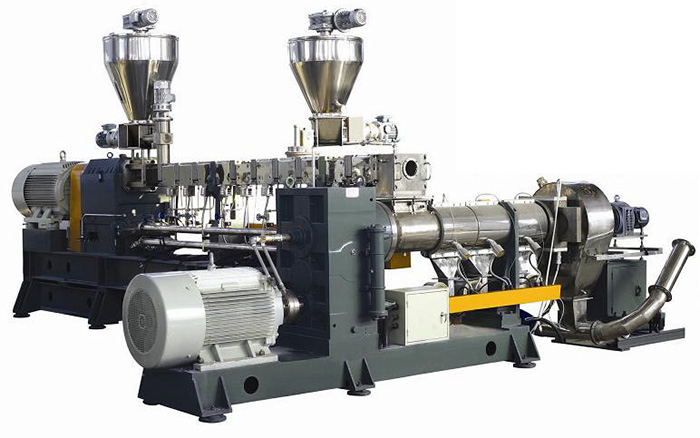Copyright © Shanghai Omega Machinery Co., Ltd. All rights reserved.
What is the design of screw and barrel?
Aug 26,2024
1. The Screw Design
The screw is the rotating component inside the barrel and has a helical shape, which is essential for moving the material forward. The screw is divided into three main sections:Feed Zone (or Feed Section):
Function: The initial section where raw material, usually in pellet form, enters the screw.
Design: This section typically has a larger channel depth, allowing for maximum material intake.
Compression Zone (or Transition Section):
Function: Here, the material is compressed and heated to a molten state. The pressure increases, and the material is mixed thoroughly.
Design: The channel depth gradually decreases, which helps in compressing and melting the material.
Metering Zone:
Function: This final section ensures a consistent and homogeneous melt before the material exits the screw.
Design: The channel depth is shallow and uniform, providing steady pressure and flow.
Screw Pitch: The distance between consecutive screw threads. It can be constant or variable, depending on the process requirements.
Screw Length-to-Diameter Ratio (L/D Ratio): This ratio is vital in determining the residence time of the material in the screw, affecting how much it heats and mixes. Typical L/D ratios range from 18:1 to 30:1.
2. The Barrel Design
The barrel encases the screw and is usually made from high-strength steel to withstand the pressures and temperatures involved.Heating Elements:
Function: External heating elements are placed along the barrel to control the temperature and aid in melting the material.
Cooling Systems:
Function: These are essential to prevent overheating and ensure a consistent processing temperature.
Barrel Liner:
Function: The inner surface of the barrel is often lined with a wear-resistant material to reduce friction and extend the barrel’s lifespan.
3. Interaction Between Screw and Barrel
The screw rotates within the barrel, creating friction and shear forces that help melt the material. The design of both components must be carefully calibrated to optimize the melting, mixing, and conveying of the material.4. Considerations in Design
Material Type: Different materials require different screw designs (e.g., for polyethylene vs. nylon).Process Requirements: The design can vary based on whether the process is extrusion, injection molding, or blow molding.
Corrosion and Wear Resistance: Depending on the material being processed, the screw and barrel must resist wear and corrosion.
5. Applications
Screw and barrel designs are found in various industries, including:Plastic extrusion (e.g., producing plastic pipes, films)
Injection molding (e.g., manufacturing plastic parts)
Rubber processing
Food processing (e.g., extruding dough or other food products)
The design intricacies directly affect the efficiency, product quality, and overall operation of the processing equipment.
Prev News Next News
- Information
- How should one select the molding equipment when generating PP water supply pipes?
- Why do the surfaces of extruded profiles have weld marks when extruding? What are the solutions to eliminate these marks?
- Why do large, dull and unreflective bubbles appear on the surface of the special profiles? How can this problem be solved?
- What causes the uneven surface and poor gloss of the sheet during the sheet extrusion process? How can it be solved?
- Why does the cooling process for profile extrusion become unbalanced?
- What countermeasures can be taken to improve the dimensional and positional accuracy of profiles during the profile production process?
- How should profile molds be cleaned and maintained?
- What are the corresponding solutions to the phenomenon of grooves and pits on the surface of profiles?
- How should the raw materials be selected in the formula for PVC surface skin core layer microcellular foamed extruded profiles?
- How should the production process of biaxially oriented polyethylene terephthalate (BOPET) film be controlled?
- Contact Us

-
Shanghai Omega Machinery Co., Ltd.
Add.: No.168 Hualian Road, Putuo District, Shanghai City
Contact: Nina
Tel.: +86-021-69921527
Mobile: +86-15021464410
Fax: +86-021-69921567
E-mail: omegajessica@163.com;965425705@qq.com
WeChat No.: 1131449532
Whatsapp: +86 159 0054 6558

-
